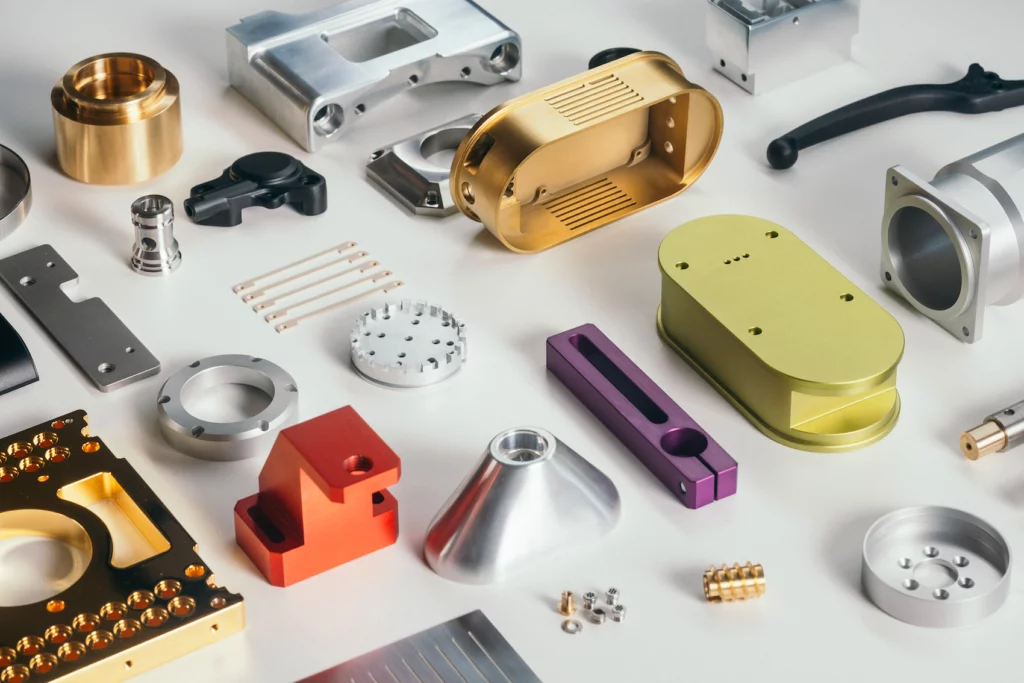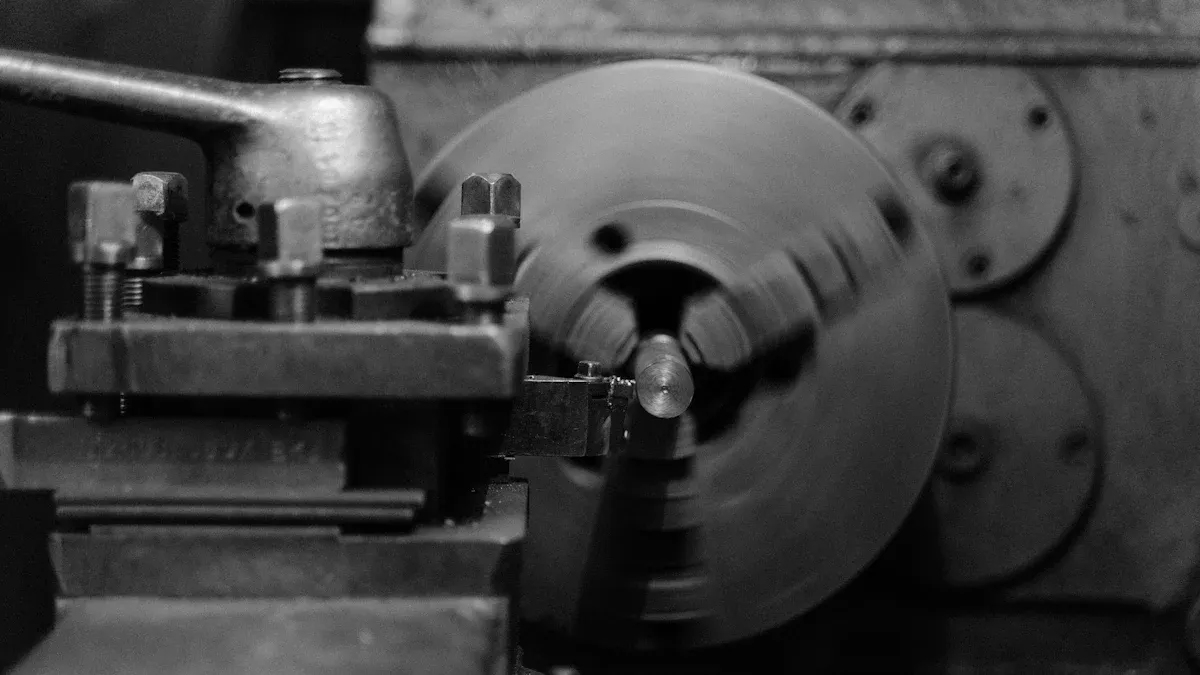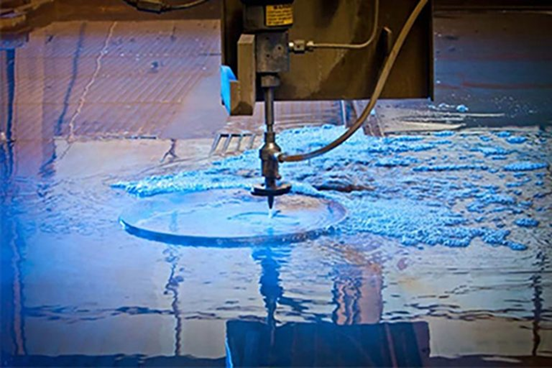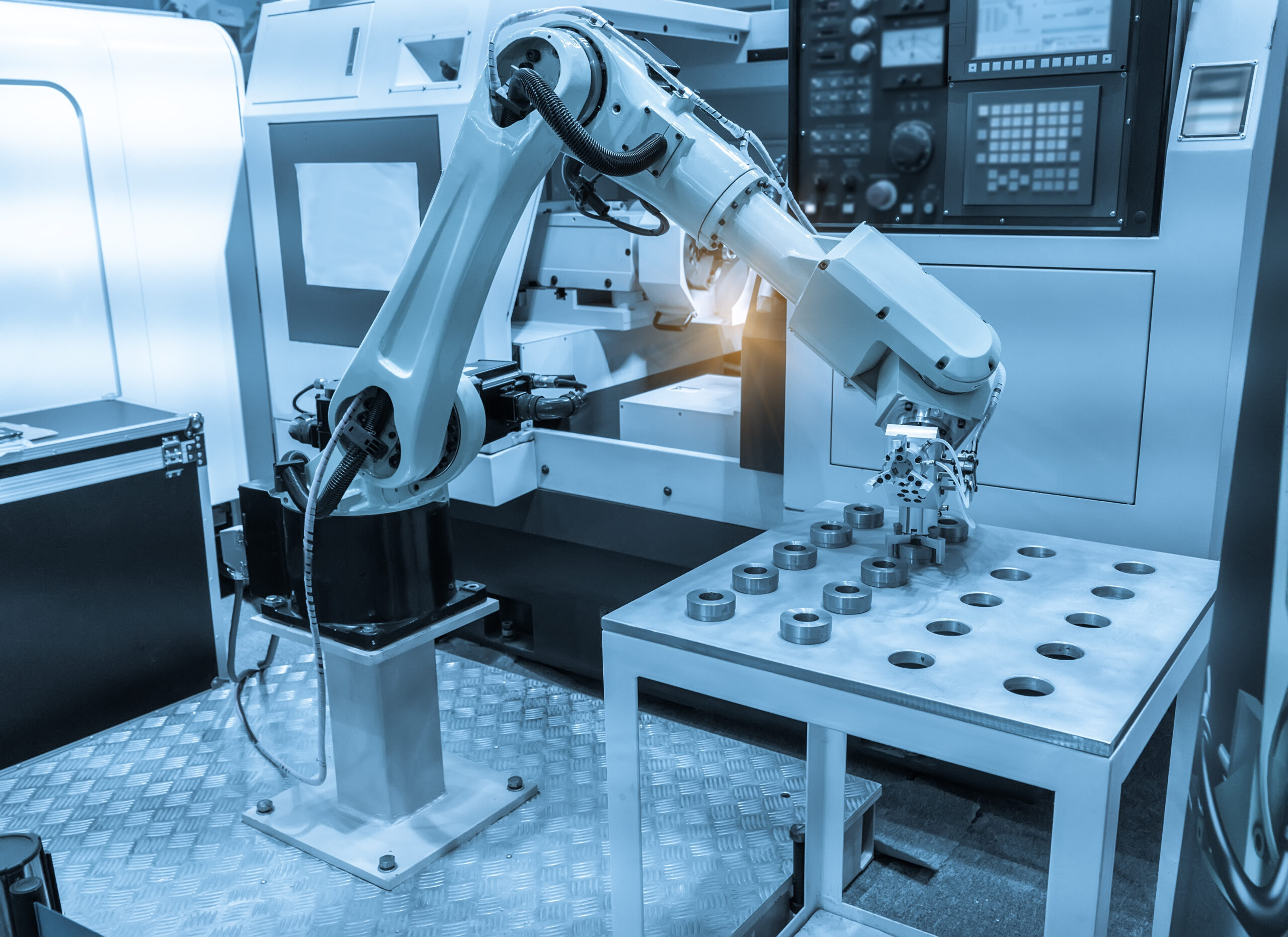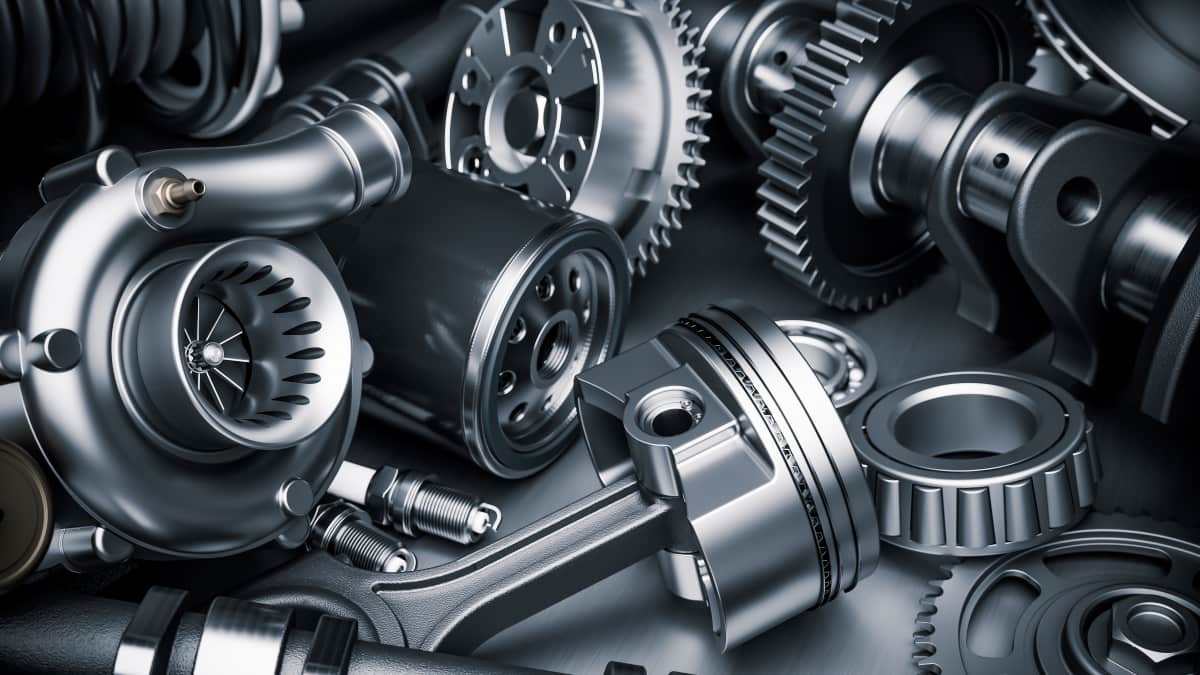What is Precision CNC Machining?
Precision CNC machining is a manufacturing method that utilizes computer-controlled machines to create high-precision parts and assemblies. These parts have complex geometries and tight tolerances. CNC stands for “Computer Numerical Control.” Because the software program is edited to control how the machine tool moves, such as the speed, direction, and depth of the machine tool. Therefore, it can produce precise and consistent parts. CNC machine tools can achieve a variety of movements, such as drilling, milling, and turning. Precision CNC machining can also process a variety of materials, such as metal, plastic, or wood. In addition, precision CNC machining is popular in the aerospace, automotive, medical, and electronics fields. High-quality parts and assemblies with tight tolerances and surface finish rely on it. Precision CNC machining is an efficient and economical way to manufacture complex parts. This is not possible with traditional machining technology.
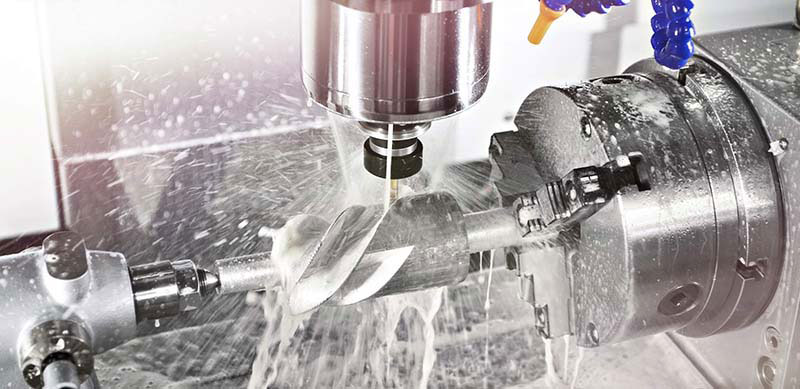
Precision CNC Machining Process
1. Design CAD Model
Design engineers use software to design 2D or 3D models. Common software like AutoCAD, SolidWorks, Rhinoceros 3D Max, Pro-e, UG, and Catia. And 2D designs can also be converted to 3D designs according to product requirements. Engineers develop and refine CAD models to manifest critical features of the part. Such as tolerances, construction lines, threads, and other parameters. This could help operators have a clear to machine the parts better.
2. Formatting for CNC compatibility
The CAD model won’t be understood by CNC machines. So that the machine can understand it, you must convert the CAD model into a CNC-compatible file. Use online software providers or CAM programs like AutoCAD or Fusion 360 for this step. This software can transform data into a CNC-compatible format and provide parameters to the CNC machine. For example, the machining operation’s rotational and linear movement, cutting order, toolpath, workpiece, machine speed, etc.
3. Set Up Parameters onthe CNC Machine
Once the CAM format designs are finalized, the next step is to prepare the machine for production. The operator mounts the workpiece onto the machine to fine-tune the machine tool. According to the materials and design of the workpiece, the operator will choose different machining tools to cut the workpiece. Besides, he will also set clamps appropriately to achieve a better machining purpose. Such as setting the coolant levels.
4. Start to Machine the Part
Once the operator attaches the necessary cutting tools, the process will start. The automatic process will run until the computer program declares it as complete. To ensure quality parts,
different levels of inspection are applied during or after the machining process.

The Types of Precision CNC Machine Tools
Below, I will introduce the types of precision CNC machine tools and classify them according to their specific functions and high-precision applications:
CNC Milling Machines
Function: Precision cutting, drilling, and shaping of solid materials (typically metals or plastics).
Types:
- Vertical CNC Milling Machines (VMCs): Ideal for precision part-making with vertical spindle orientation; commonly used in mold and die industries.
- Horizontal CNC Milling Machines (HMCs): Feature horizontal spindle orientation for better chip evacuation and part accuracy in complex machining.
- 5-Axis CNC Milling Machines: Allow simultaneous motion on 5 axes for intricate parts, widely used in aerospace, automotive, and medical fields due to ultra-precision.
- Precision Level: Up to ±0.001 mm in high-end models.
CNC Lathes
Function: High-precision turning of cylindrical or conical components.
Types:
-
2-Axis CNC Lathes: Perform basic turning with high accuracy; ideal for round components.
-
Multi-Axis CNC Turning Centers: Include live tooling, Y-axis, and sub-spindles for complex geometry parts with tight tolerances.
-
Swiss-Type CNC Lathes: Designed for ultra-precise micro-turning of small, slender components (e.g., medical or watch parts), often achieving sub-micron accuracy.
- Precision Level: ±0.002 mm or better in high-performance machines.
CNC Grinding Machines
Function: Achieve superior surface finishes and ultra-tight tolerances by removing material via abrasive processes.
Types:
-
Surface Grinders: Used for flat surfaces with high dimensional accuracy.
-
Cylindrical Grinders: Ideal for round, cylindrical components such as shafts and bearings.
-
Centerless Grinders: Provide precise machining of small cylindrical parts without using centers.
-
Internal Grinders: Used for ultra-precise inner diameter (ID) grinding.
- Precision Level: Can achieve tolerances within ±0.0005 mm and surface finishes under Ra 0.1 µm.
CNC Electrical Discharge Machines (EDM)
Function: Remove material from conductive workpieces using electrical discharges.
Types:
-
Wire EDM: For precision contour cutting of hard materials with tight tolerances.
-
Sinker EDM: Ideal for complex cavities in mold making.
-
Hole Drilling EDM: Produces small, deep holes in hard materials.
- Precision Level: Typical accuracy of ±0.002 mm and excellent for sharp internal corners and tiny features
CNC Laser Cutting Machines
Function: High-speed, non-contact precision cutting of metals and non-metals using a laser beam.
Types:
-
Fiber Laser CNC Machines: Best for precision metal cutting (stainless steel, aluminum, titanium).
-
CO₂ Laser CNC Machines: Commonly used for cutting non-metals like plastics, wood, or acrylics.
- Precision Level: Cutting accuracy down to ±0.01 mm with fine kerf width.
CNC Waterjet Cutting Machines
Function: Precision cutting of materials using high-pressure water, sometimes with abrasives.
Types:
-
Pure Waterjet: For soft materials like rubber or foam.
-
Abrasive Waterjet: Cuts metals, glass, stone, and composites with high accuracy.
- Precision Level: Typically ±0.1 mm, with smoother cuts and minimal thermal distortion.
CNC Plasma Cutting Machines
Function: High-precision cutting of conductive metals using plasma arcs.
Types:
-
2D CNC Plasma Cutters: For flat sheet metal cutting.
-
3D Plasma Cutting Machines: Enable bevel cuts and curved surface profiling.
- Precision Level: ±0.2 mm in high-end models, though slightly lower than laser or waterjet machines.
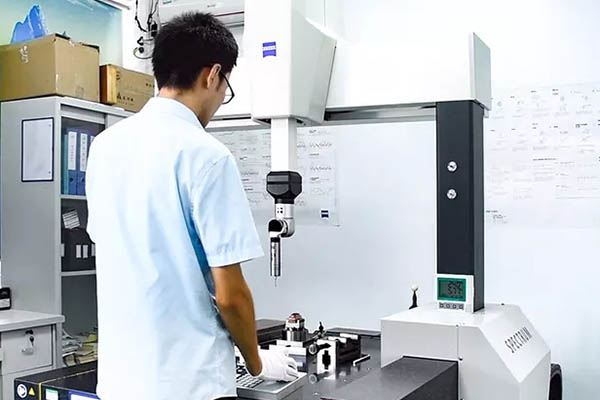
CNC Coordinate Measuring Machines (CMMs)
Function: Not machining, but essential for measuring and verifying precision parts post-machining.
Types:
-
Bridge CMMs: Common in labs for high-accuracy measurement.
-
Portable CMMs (Arm-type): Useful on the shop floor.
-
Optical/Scanning CMMs: Use vision or laser scanning for non-contact measurement.
- Precision Level: Measurement accuracy up to ±0.001 mm in premium systems.
Summarize The Characteristics of Precision CNC Machines
| Machine Type | Typical Use Case | Max Precision |
| CNC Milling (5-Axis) | Aerospace, molds | ±0.001 mm |
| CNC Turning (Swiss) | Medical, micro parts | ±0.002 mm or better |
| CNC Grinding | Tooling, finishing | ±0.0005 mm |
| CNC EDM | Mold cavities, fine details | ±0.002 mm |
| CNC Laser Cutting | Sheet metal, precision parts | ±0.01 mm |
| CNC Waterjet | Thick, temperature-sensitive parts | ±0.1 mm |
| CNC Plasma | Heavy-duty metal cutting | ±0.2 mm |
| CNC CMM | Dimensional verification | ±0.001 mm |
Advantages of Precision CNC Machining
High Accuracy
Precision machining could produce high accuracy and tight tolerance. Precision machining ensures perfect functionality in later stages. Thus, achieving excellent accuracy is crucial for these specific elements to work flawlessly.
Tight Tolerances
CNC is the go-to method for achieving tight tolerances. Tolerance, or dimensional accuracy, is crucial in ensuring that the machined parts match their CAD blueprints with minimal deviation. Specialized cutting tools and processes are adapted. CNC precision machining can effectively minimize these tolerances. Parts will be more accurate compared to the original blueprints.
Consistency
CNC machines are highly automated and operate based on programmed instructions, which ensures that they can produce parts that are consistent in size, shape, and finish. This feature is particularly crucial for industries where precision and reliability are critical factors for optimal performance over time.
low production cost
CNC machining ensures accurate parts. This results in fewer defective products, reducing the scrap rate of parts. Moreover, automation reduces labor costs, and the technology saves material costs. CNC machining is thus a cost-effective option compared to any other alternatives.
Versatility
Versatility is one of the key advantages of CNC machining, enabling machines to work with a wide range of materials and perform various operations. Below are a few examples that showcase the versatility of CNC machining:
- Materials: CNC machines can work with a diverse range of materials, including metals (such as aluminum, steel, and titanium), plastics (like ABS, PVC, and polycarbonate), and wood. The flexibility in material options enables manufacturers to create parts that cater to the unique demands of their respective industries.
- Operation: CNC machines can carry out a variety of operations such as milling, drilling, turning, grinding, and more. With the help of CNC milling machines, intricate shapes and contours can be created in metal pieces, while CNC lathes can transform cylindrical materials into precisely dimensioned shafts.
- Prototyping: CNC machining offers the flexibility to manufacture parts in both small and large quantities, making it an excellent choice for prototyping purposes. Manufacturers can efficiently create a small batch of components for testing and perfecting their design before producing larger volumes.
Safety
CNC machines are equipped with safety features that ensure the well-being of operators. For instance, sensors are integrated into several machines that can recognize a broken tool or an incorrectly positioned part. The machine will then halt automatically to avoid mishaps.
Types of Precision CNC Machining Operations
In part manufacturing, precision CNC machining is a subtractive process that involves removing material from a workpiece to create the desired product. Some common precision CNC machining operations used for this purpose include:
CNC Turning involves the rotation of a workpiece while a cutting tool is moved along its length to remove material. The tool is mounted on a carriage that can move along the X and Z axes, enabling it to travel in and out along the length of the workpiece. A tool holder holds the cutting tool in place and can be adjusted to change its position and angle. This process is often used to create cylindrical parts with various features such as grooves, threads, holes, and tapers. Cutting tools are typically made of high-speed steel, carbide, or diamond, depending on the material being machined and the desired finish. By removing material in a controlled manner as it moves along the part, the cutting tool creates the desired shape or design.
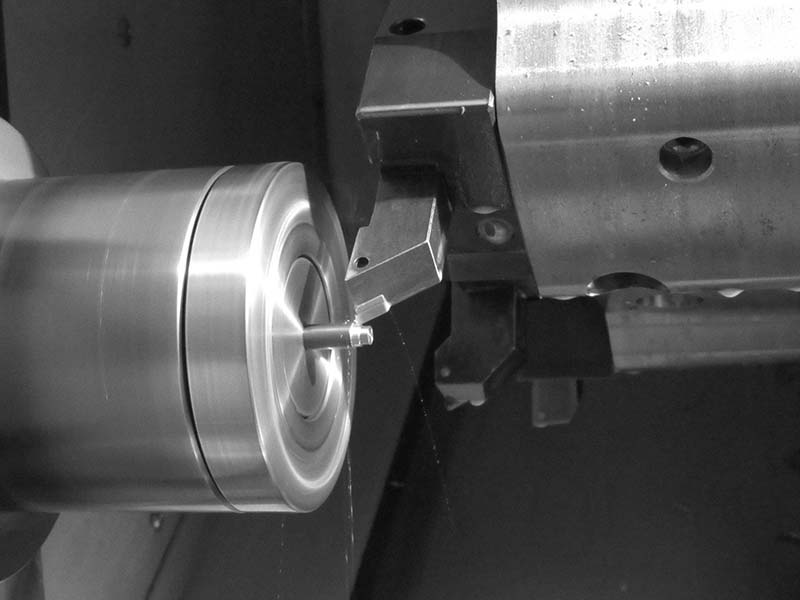
CNC milling is a rotary processing method that differs from CNC turning. In milling, the milling cutter rotates instead of the workpiece. There are two modes of relative motion in traditional milling. The first mode entails fixing the workpiece and relying on the milling cutter to rotate and translate. The second mode involves the milling cutter rotating simply, while the workpiece moves in three directions: front and back, left and right, and up and down.
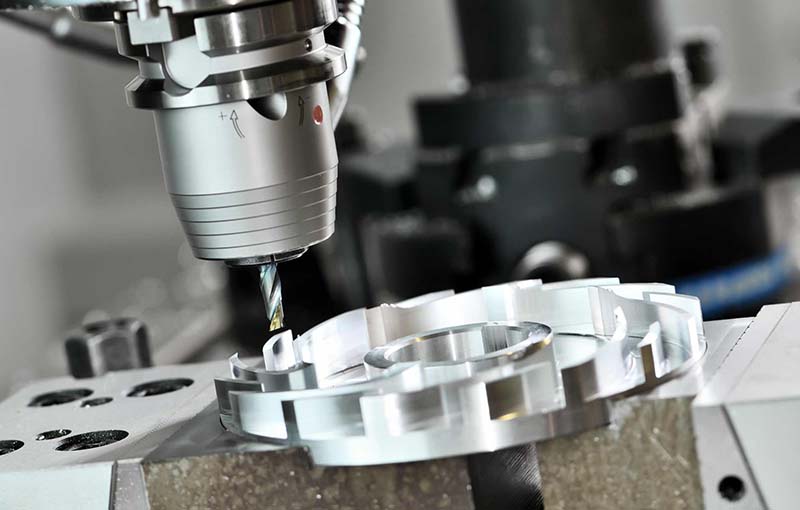
CNC Drilling
CNC drilling is a machining process that utilizes rotating cutting tools to create round holes in a stationary workpiece. The drilling process is typically used for aesthetic purposes or to create space for screws and bolts. Drilling is a variation of routers or mills, and it can be combined with other methods of shaping materials.

Multi-axis CNC machining is a type of CNC machining that involves the use of computer-controlled machines that can move along multiple axes to create complex shapes and geometries. One of the main advantages of multi-axis CNC machining is the ability to produce parts with complex geometries and features. Traditional CNC machining is limited to X, Y, and Z axes, making it difficult to produce parts with more complex shapes. Multi-axis CNC machines, on the other hand, can move cutting tools along multiple axes, allowing complex shapes and contours to be created.

3-axis machining involves moving the cutting tool along the X, Y, and Z axes. This is the most basic form of multi-axis machining and is commonly used for simple parts and features. While it may not be suitable for producing highly complex parts, it is a cost-effective option for producing parts that do not require the advanced capabilities of multi-axis machining. For example, flat parts like plates, brackets, and covers can be produced with basic machining operations due to their simple shapes. Cubic parts, including blocks and cubes, also have simple features like holes and slots that can be machined using basic cutting tools. Additionally, cylindrical parts like shafts, tubes, and rods can be created through basic machining operations like turning and drilling. Parts with simple contours, like curved surfaces and chamfers, can also be produced through 3-axis machining using basic cutting tools and techniques.
4-Axis Machining
A form of CNC machining, 4-axis machining involves adding an extra axis of rotation (often called the A-axis) to the machining process. This allows the cutting tool to rotate around the part, which is useful for creating features such as angled holes. Some examples of parts that can be produced using 4-axis machining include:
- Parts with angled holes: 4-axis machining can be used to produce parts with angled holes, such as those found in turbine blades and other aerospace components. The A-axis allows the cutting tool to be tilted at an angle, allowing holes to be machined at precise angles.
- Curved parts: Four-axis machining can be used to produce parts with curved surfaces, such as impellers, propellers, etc. The A-axis allows the cutting tool to move around the part, allowing complex shapes and contours to be machined.
- Parts with undercuts: 4-axis machining can be used to produce parts with undercuts, such as those in molds. The A-axis allows the cutting tool to approach the part from different angles, allowing the machining of features that are difficult or impossible to produce using traditional machining methods.
- Parts with angular features: 4-axis machining can be used to produce parts with angular features such as chamfers and bevels. The A-axis allows the cutting tool to approach the part at an angle, allowing precise angular features to be machined.
5-axis machining involves adding two additional axes of rotation (often referred to as the A and B axes) to the machining process. This allows the cutting tool to move in multiple directions, allowing for greater flexibility and versatility compared to 3- and 4-axis machining. This is useful for creating complex shapes and contours. Some examples of parts that can be produced using 5-axis machining include:
- Aerospace components: 5-axis machining can be used to produce complex aerospace components, such as turbine blades, engine parts, landing gear components, etc. Additional axes allow complex shapes and features to be created with high precision and accuracy.
- Medical implants: 5-axis machining can be used to produce medical implants such as hip and knee replacements. Additional axes can create complex shapes that match the patient’s body anatomy.
- Molds and mold components: 5-axis machining can be used to produce molds and mold components such as cavities, cores, and inserts. Additional axes allow the creation of undercuts and other complex features, which are critical for producing high-quality molds and dies.
- Auto parts: Five-axis machining can be used to produce auto parts such as engine blocks, cylinder heads, and transmission parts. Additional axes can create complex shapes and features, which are critical for high-performance automotive applications.
Materials for Precision CNC Machining
Precision CNC machining is a versatile manufacturing process that can work with a wide range of materials. Some of the most commonly used materials for CNC machining include:
| Materials | Image | Description | More Infos |
| Aluminum | 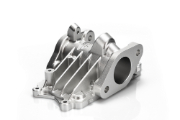 |
High strength-to-weight ratio | Learn More |
| Stainless steel | 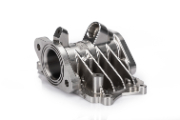 |
Good corrosion resistance + High Hardness | Learn More |
| Steel | .png) |
Good machinability + Excellent electrical conductivity | Learn More |
| Brass | .png) |
Good machinability + Excellent electrical conductivity | Learn More |
| Copper | 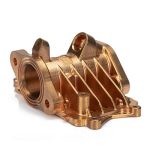 |
>99.3% Purity + Superior electrical conductivity | Learn More |
| Titanium | 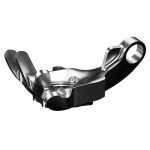 |
Corrosion resistance + High tensile strength | Learn More |
| Materials | Image | Description | More Infos |
| ABS | 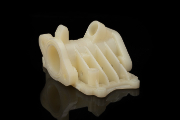 |
High stability + Easy to process | Learn More |
| POM (Delrin) | 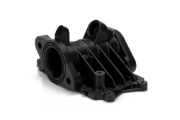 |
Low-friction + High-stiffness | Learn More |
| PC (Polycarbonate) | .png) |
High impact resistance + High transparency | Learn More |
| PA (Nylon) | 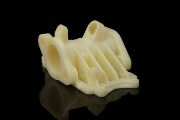 |
High chemical and heat resistance + High abrasion and wear resistance | Learn More |
| PMMA (Acrylic)
|
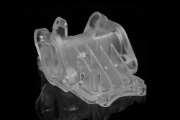 |
High transparency + Good chemical stability | Learn More |
| PEEK | 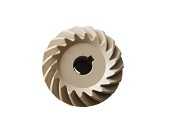 |
High-performance thermoplastic, very high strength, thermal and chemical resistant. | Learn More |
| PP (Polypropylene) | 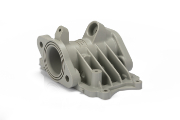 |
Excellent chemical resistance. Food-safe grades available. | Learn More |
| PE (Polyethylene) | 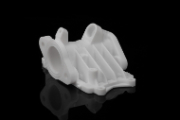 |
Excellent strength-to-weight ratio, impact, and weather resistant. | Learn More |
Surface Finishes for Precision CNC Machining
Surface finish is an important consideration in precision CNC machining because it affects the appearance, function, and performance of the final product. Some common surface finishes for precision CNC machining include:
| Name | Description | Materials | Color | Texture | Link | |
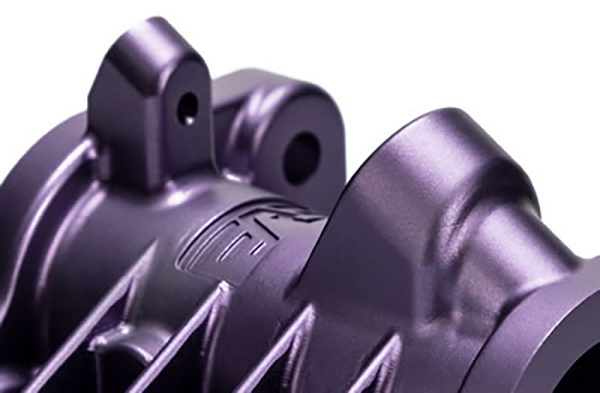 |
Anodizing | Anodizing improves corrosion resistance, enhances wear resistance and hardness, and protects the metal surface. Widely used in mechanical parts, aircraft, automobile parts, precision instruments, etc. | All materials | Clear, black, grey, red, blue, gold. | Smooth, matte finish. | Learn More |
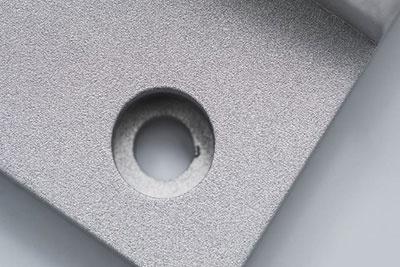 |
Bead Blasting | Bead blasting results in parts with a smooth surface with a matte texture. Used mainly for visual applications and can be followed by other surface treatments. | ABS, Aluminum, Brass, Stainless Steel, Steel | n/a | Matte | Learn More |
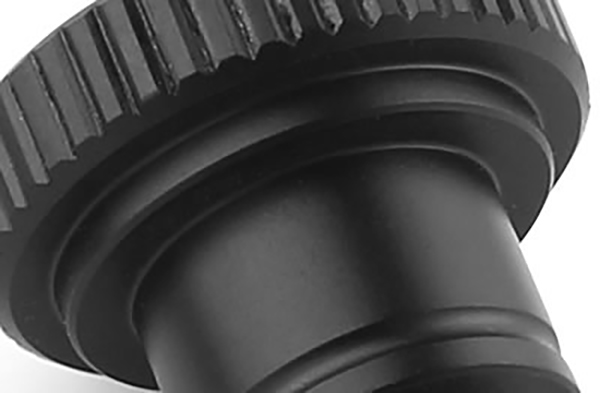 |
Powder Coating | Powder coating is a type of coating that is applied as a free-flowing, dry powder. Unlike conventional liquid paint, which is delivered via an evaporating solvent, powder coating is typically applied electrostatically and then cured under heat or with ultraviolet light. | Aluminum | Black, any RAL code or Pantone number | Gloss or semi-gloss | Learn More |
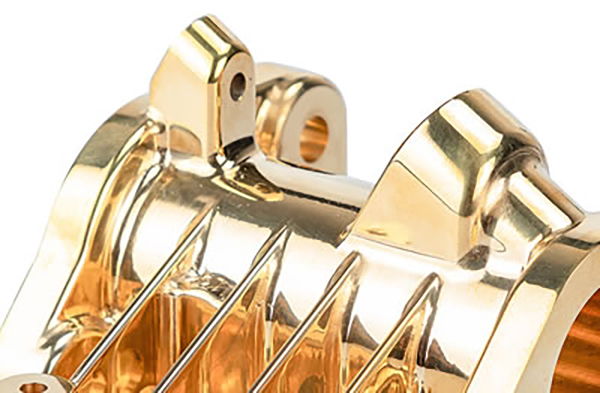 |
Electroplating | Electroplated coating preserves the surface of parts and resists rust and other defects from causing decay by applying electric currents to reduce metal cations. | Aluminum, steel, stainless steel | n/a | Gloss or semi-gloss | Learn More |
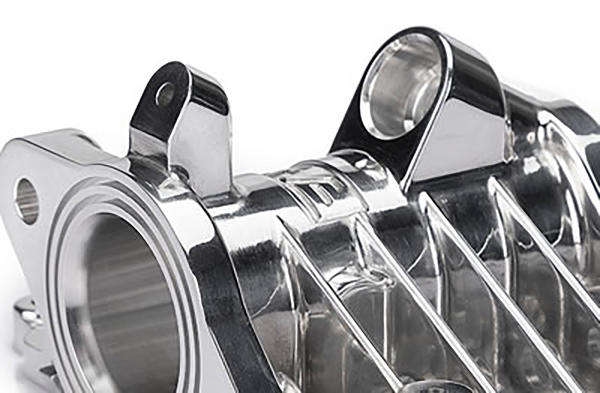 |
Polishing | Ranging from Ra 0.8~Ra0.1, polishing processes use an abrasive material to rub the part’s surface to make the shine more less shiny, depending on your requirements. | All materials | n/a | Smooth, glossy finish | Learn More |
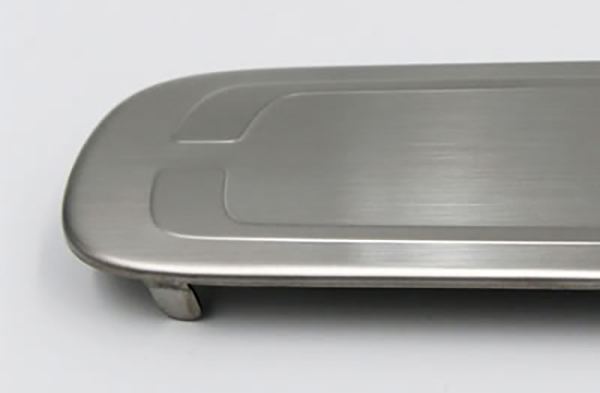 |
Brushing | Brushing is a surface treatment process in which abrasive belts are used to draw traces on the surface of a material, usually for aesthetic purposes. | ABS, Aluminum, Brass, Stainless Steel, Steel | n/a | Stain | Larn More |
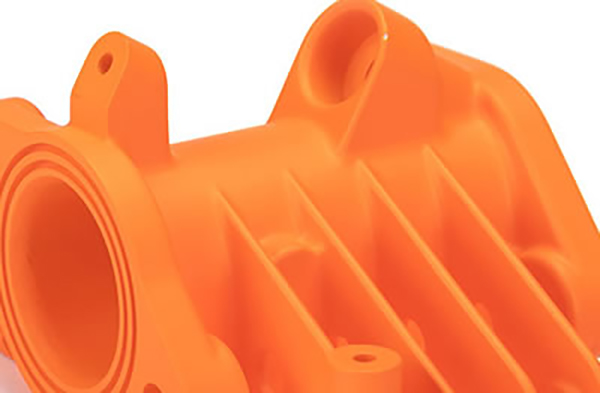 |
Painting | Painting involves spraying a layer of paint onto the surface of the part. Colors can be matched to a Pantone color number of the customer’s choosing, while finishes range from matte to gloss to metallic. | Aluminum, Stainless Steel, Steel | Custom | Gloss, semi-gloss, flat, metallic, textured | Learn More |
Industry Applications of CNC Precision Machining
Application of Precision CNC Machining in The Automotive Industry
Precision CNC machining is essential in the automotive industry, producing high-quality, high-performance parts that help meet the stringent requirements of the modern automotive market. Details are as follows:
- Engine Components:
High-precision engine components are often machined using precision CNC machining, such as cylinder heads, intake manifolds, and engine blocks. These components have complex geometries and require tight tolerances to ensure optimal performance. Precision CNC machining can produce consistent and accurate parts. - Transmission Components:
Transmission components require high precision and durability, such as gears, shafts, and housings. Precision CNC machining can produce complex shapes and features to meet these requirements. - Suspension Components:
Suspension components require high strength and stiffness to ensure optimal handling and stability. Precision CNC machining is the ideal method to achieve lightweight and high-performance designs. For example: - Control Arms:
The control arm is a key component of the vehicle’s suspension system, connecting the suspension to the frame. Precision CNC machining can produce control arms with high accuracy and consistency, ensuring they install and operate correctly. - Steering Knuckles:
The steering knuckle is another important component of the vehicle’s suspension system. It connects the steering components to the wheel hub. Precision CNC machining is used to produce steering knuckles with precise geometry and tolerances, and ensure they can withstand the loads and stresses of the steering system. - Sway Bars: Sway bars (also known as anti-roll bars) are used to reduce body roll during cornering, improving handling and stability. CNC machining is used to produce sway bars with precise dimensions and stiffness properties, ensuring that they provide the desired level of performance.
Besides, suspension links, Strut Bodies, etc, are also widely used in CNC machining. - Interior and exterior parts: Precision CNC machining is used to manufacture interior and exterior parts with exquisite surface treatments and complex designs, including instrument panels, door handles, and grilles. Precision CNC machining can produce these complex parts with minimal tooling costs.

Application of Precision CNC Machining in The Medical Industry
Precision CNC machining plays a vital role in the medical industry. It enables precision and accuracy in the production of medical devices and instruments. Here are some of the applications of precision CNC machining in the medical industry:
- Implants: Precision CNC machining is used to produce a variety of medical implants, from dental and orthopedic implants to cranial and spinal implants. These implants require high precision and biocompatibility to ensure proper fit and function within the body.
- Surgical instruments: Surgical instruments such as forceps, scissors, clamps, etc., are often produced through precision CNC machining. These instruments require high precision and high durability to ensure optimal performance during surgery.
- Medical Devices: We also manufacture a wide range of medical devices, from pumps and valves to diagnostic and imaging equipment. Precision CNC machining ensures part accuracy and consistency.
- Prosthetics: Precision CNC machining is used to produce prosthetics such as artificial limbs and joints. These prosthetics require high precision and biocompatibility to ensure they fit and function well in the body.
- Dental Products: Precision CNC machining is used to produce dental products such as crowns, bridges, and implants. These products require high precision and biocompatibility to ensure they fit and function well in the mouth
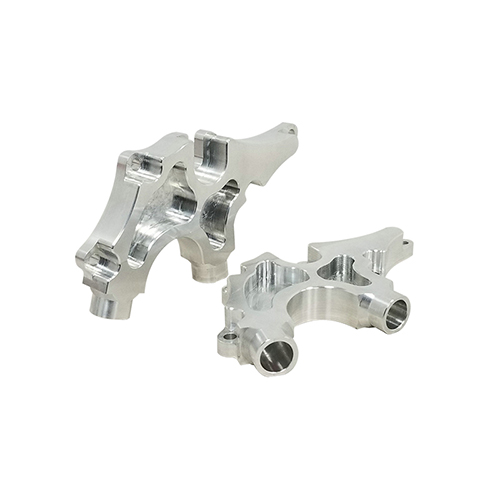
Application of Precision CNC Machining in The Robotic Industry
Precision CNC machining is widely used and vital in the robotics industry. It helps manufacturers produce high-quality, high-performance, high-precision, and consistent robotic components and systems. As robotics technology continues to advance, precision CNC machining will continue to play a key role in robotics product development and the manufacturing process.
- Robotic components: Robotic components require high precision and durability to ensure optimal performance and reliability, including gears, bearings, shafts, housings, and frames.
- End effectors: End effectors are mounted at the end of the robotic arm and are used to interact with the environment. CNC machining is used to produce end effectors with precise geometry and function, and ensure that they can accurately and consistently grasp, manipulate, and move objects.
- Control systems: Control systems require high precision and reliability to ensure precise and sensitive control of the robot. Precision CNC machining is used to produce components and housings for robotic control systems, including sensors, actuators, and controllers.
- Prototyping: Precision CNC machining is widely used in the prototyping stage of robotics development. Designers and engineers can use CNC machines to quickly prototype robotic components and test their fit, form, and function before mass production.
- Customization: Precision CNC machining allows for customized robotic components and systems. These systems can be tailored to specific robotic applications. This customization helps manufacturers optimize robot performance and meet unique design requirements
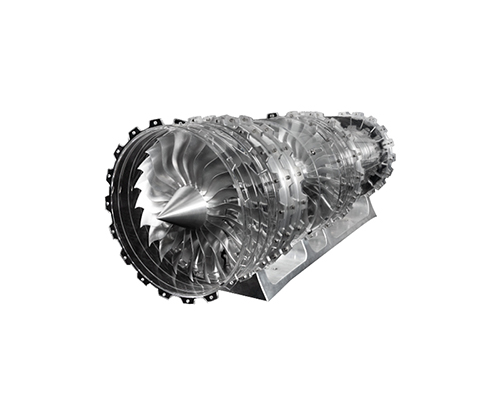
Application of Precision CNC Machining in The Aerospace Industry
Precision CNC machining is a subtractive machining process that can assist in the production of partially hollow or complex geometric parts and reduce their weight. Aerospace parts produced by precision CNC machining typically include hydraulic manifolds, gearboxes, fuel bodies, landing gear, electrical connectors, housings, etc.
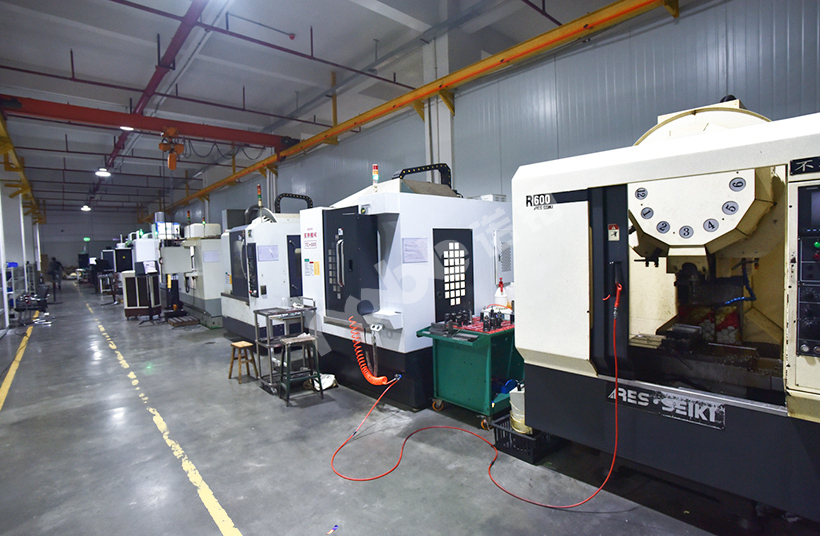
Conclusion
Precision CNC machining is beneficial for creating intricate and precise parts. This process offers numerous benefits over conventional machining techniques, such as greater flexibility, quicker production times, and superior precision and accuracy. There are multiple forms of CNC machining available, including 3-axis, 4-axis, 5-axis, and multi-axis machining, each with its distinct advantages and capabilities. By comprehending the definition, process, advantages, and types of CNC machining, businesses can make informed decisions about which machining technology to use for their specific requirements. Overall, precision CNC machining is a vital technology for countless industries, delivering the precision, accuracy, and efficiency essential for manufacturing high-quality parts and products.
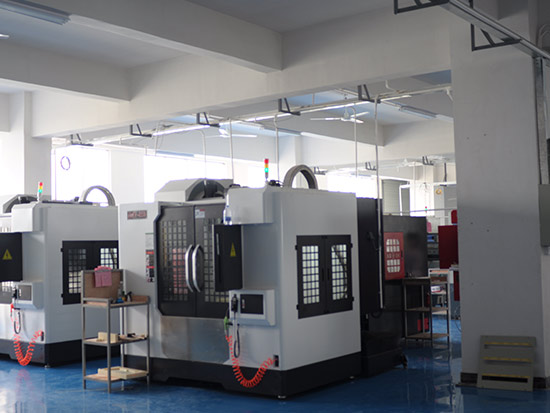
At NOBLE, we specialize in offering expert CNC precision machining services. Our top-of-the-line 3-axis, 4-axis, and 5-axis CNC machining centers allow us to create customized parts that meet our clients’ specific requirements. Our experienced engineering team and dedicated quality inspection department work tirelessly to produce top-quality parts at the most reasonable prices.
FAQ of Precision CNC Machining
The following are answers to common questions about precision machining compiled by NOBLE’s editor:
How to check the accuracy of CNC machine tools?
We can verify the accuracy of CNC machine tools by measuring their positioning accuracy and repeatability using precision instruments, such as micrometers, laser interferometers, or ballbar systems.
How accurate can a CNC machine tool be?
A high-precision CNC machine tool can achieve accuracy levels as fine as ±0.001 mm (1 micron), depending on the machine type, environmental conditions, tooling, and calibration quality.
Is CNC precision machining expensive?
CNC precision machining can be expensive, especially for complex parts or small batches, due to the high costs of the machines, tooling, programming, and skilled labor—but its superior accuracy and repeatability are often worth the price.
Does precision machining offer tight tolerances?
Yes, precision machining can offer tight tolerances, often achieving dimensional accuracy within ±0.0005 inches in high-end applications, making it ideal for industries such as aerospace, medical, and electronics where precise fit and function are critical.
What is the difference between CNC machining and precision machining?
CNC machining is a computer-controlled manufacturing process, while precision machining focuses on achieving extremely tight tolerances, high dimensional accuracy, and a fine surface finish. Precision machining is ideal for manufacturing medical devices and aerospace parts.
What is CNC precision machining used for?
CNC precision machining is used to manufacture high-precision, tight-tolerance parts, ensuring consistent quality and repeatability. It is ideal for producing precision parts for the aerospace, automotive, medical device, and robotics industries.
What types of CNC precision machine tools are there?
CNC precision machine tools include milling machines, lathes, grinding machines, EDM machines, laser cutters, waterjet cutters, plasma cutters, and coordinate measuring machines, each designed to achieve high accuracy and tight tolerances in specific machining tasks.
How accurate is CNC machining?
CNC machining can achieve high accuracy, typically within ±0.01 mm for standard machines and up to ±0.001 mm for high-precision systems, depending on the equipment, materials, and process controls used.
How can I get a quote for a CNC precision machining project?
To request a quote for a CNC precision machining project, you’ll need to provide detailed information about your part or prototype, including CAD drawings, materials, quantity, and part post-processing. Contact us via email or WhatsApp. Our experienced team of engineers will provide comprehensive solutions and quotes, helping you optimize your design, select the right process, reduce costs, and shorten project timelines.


